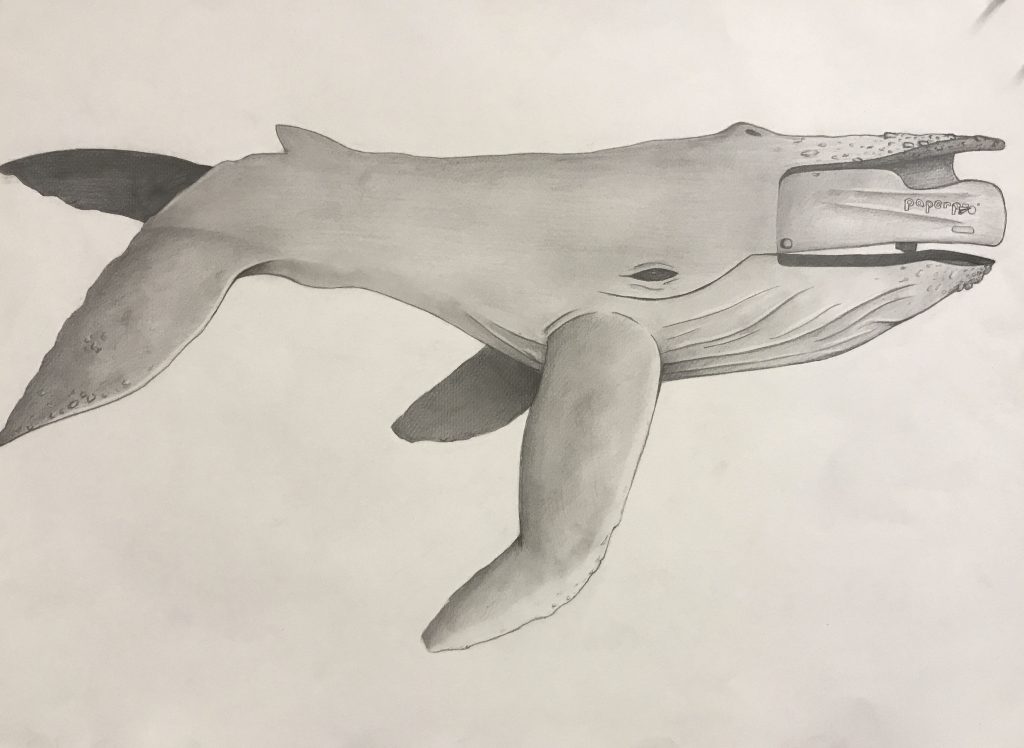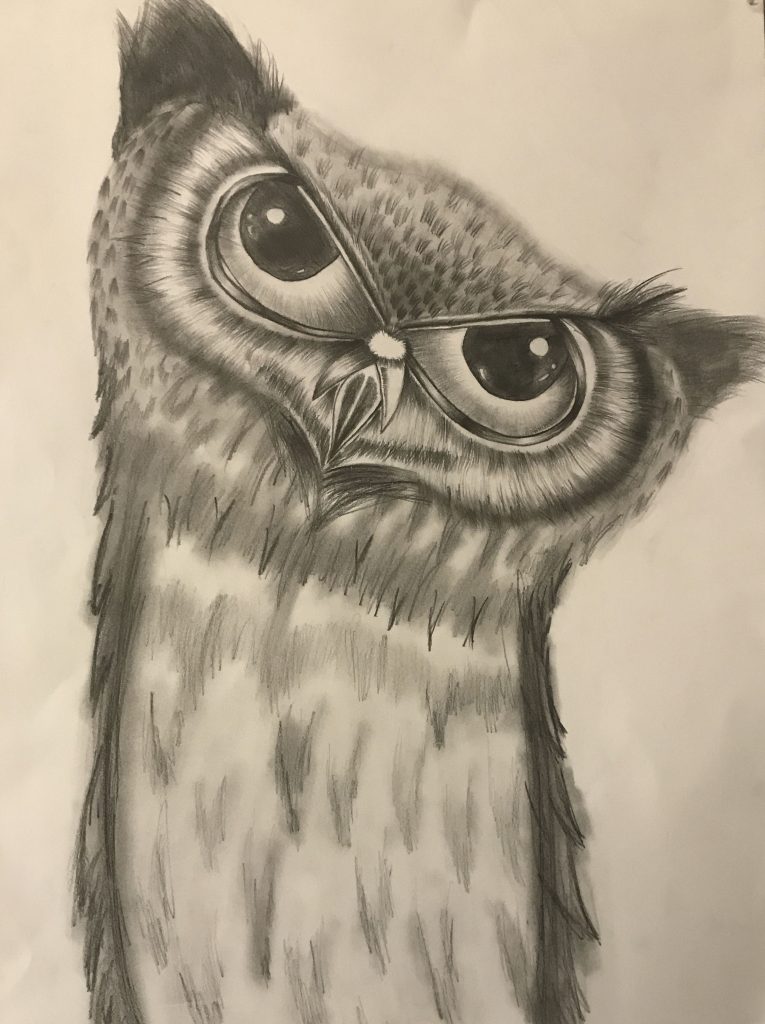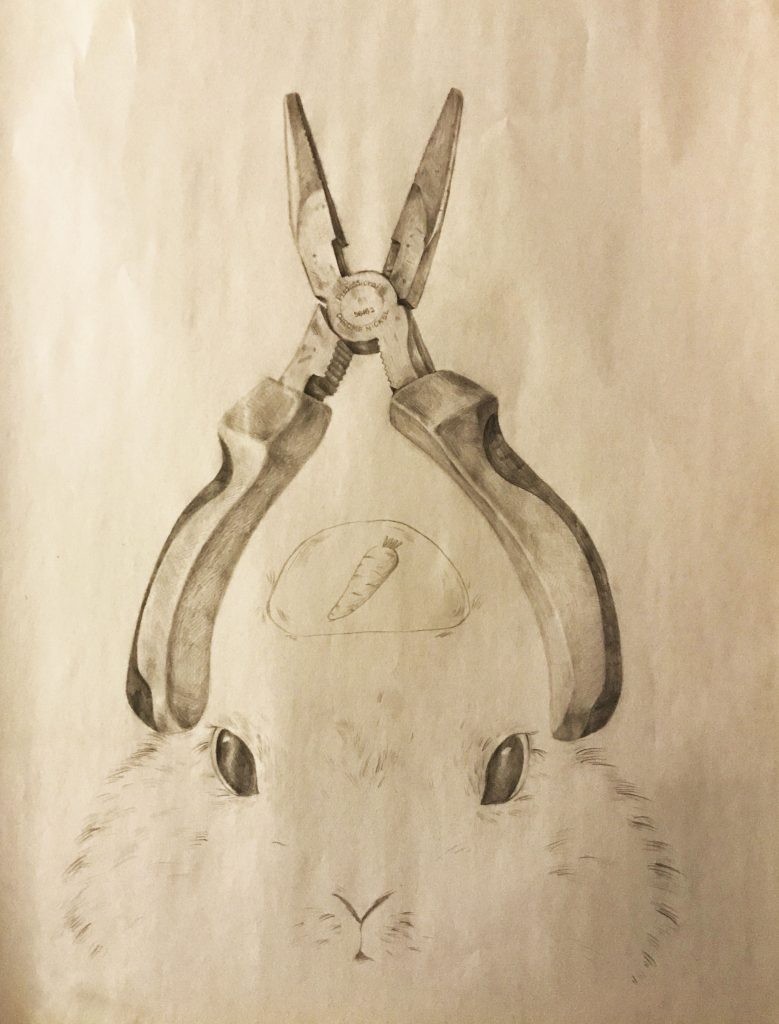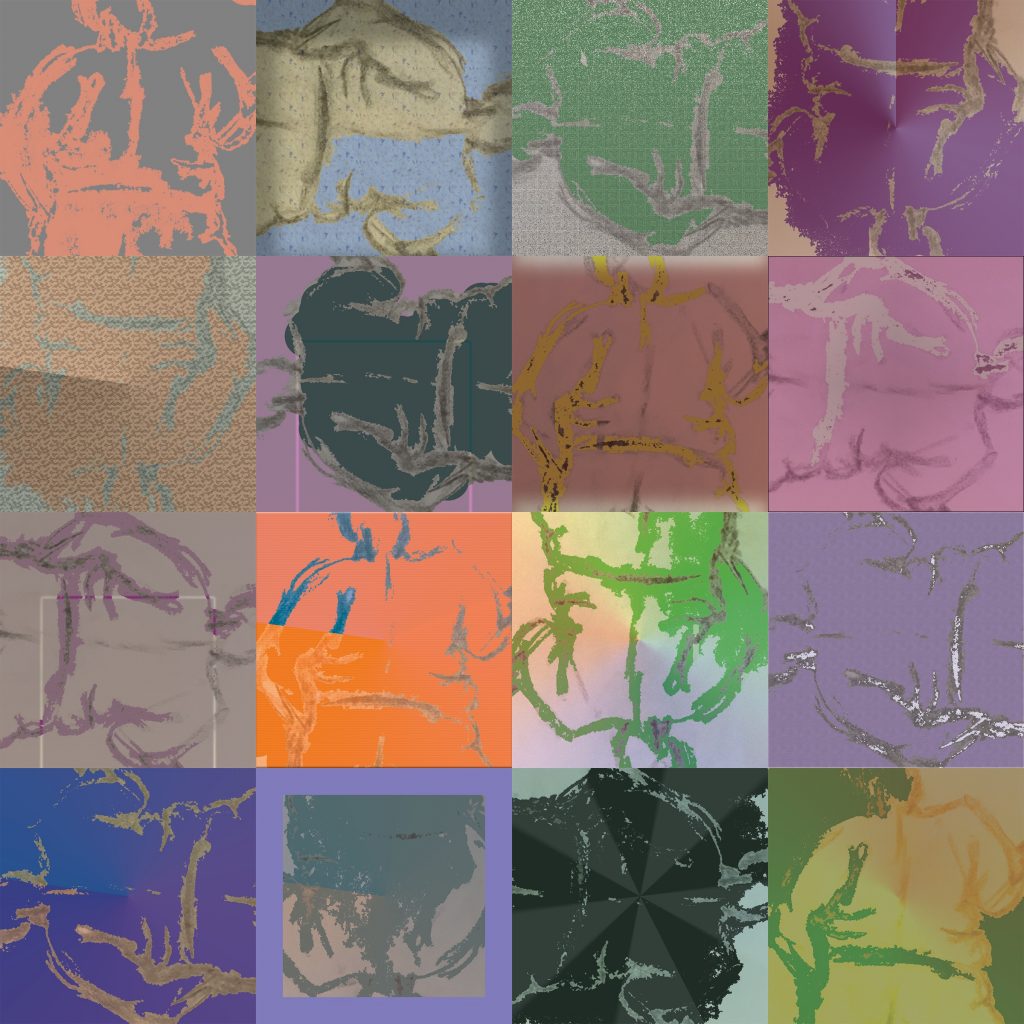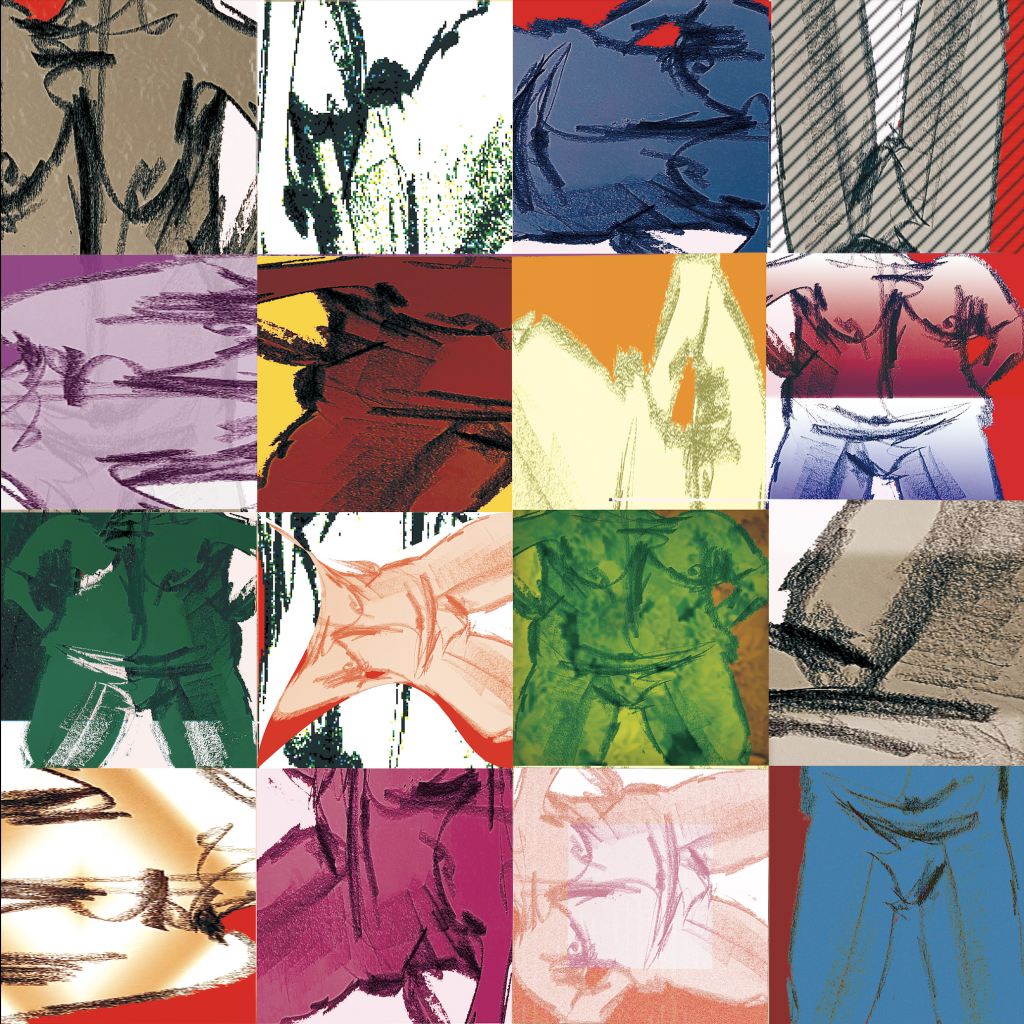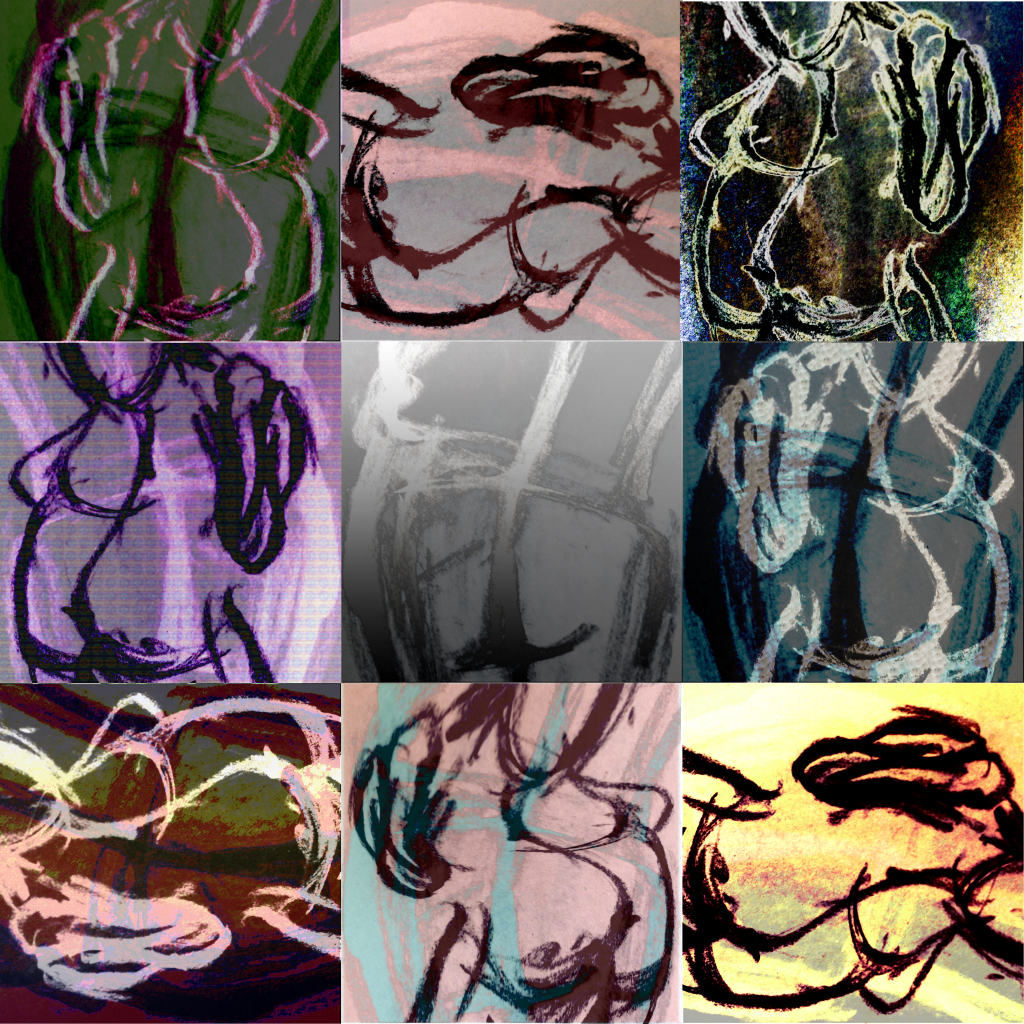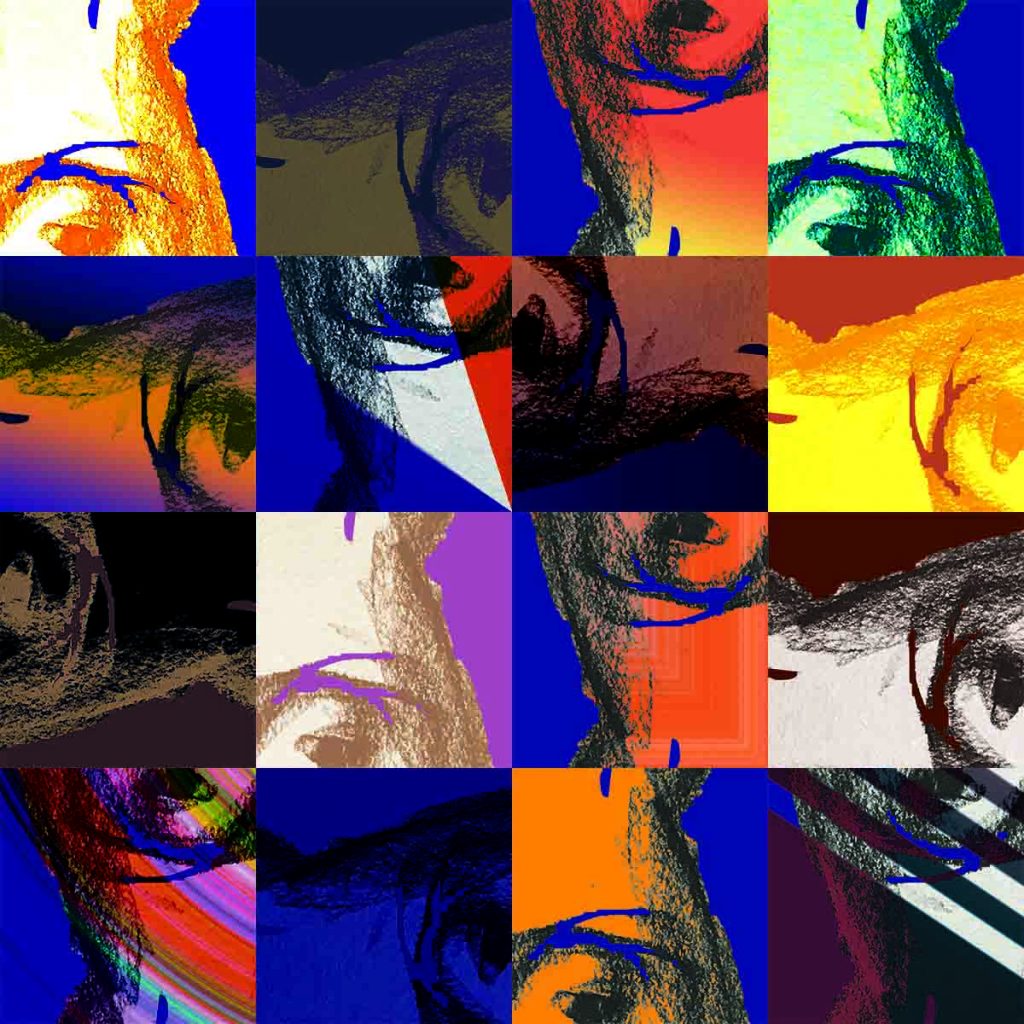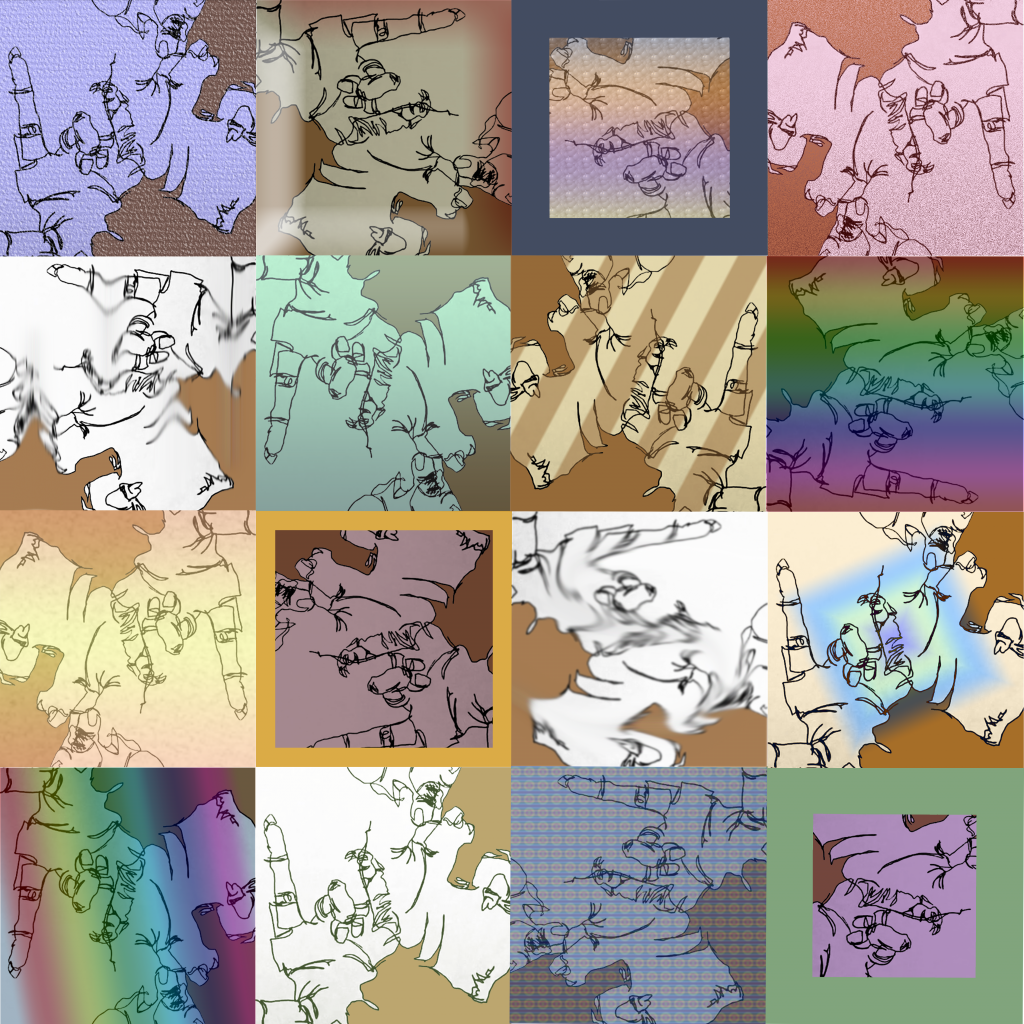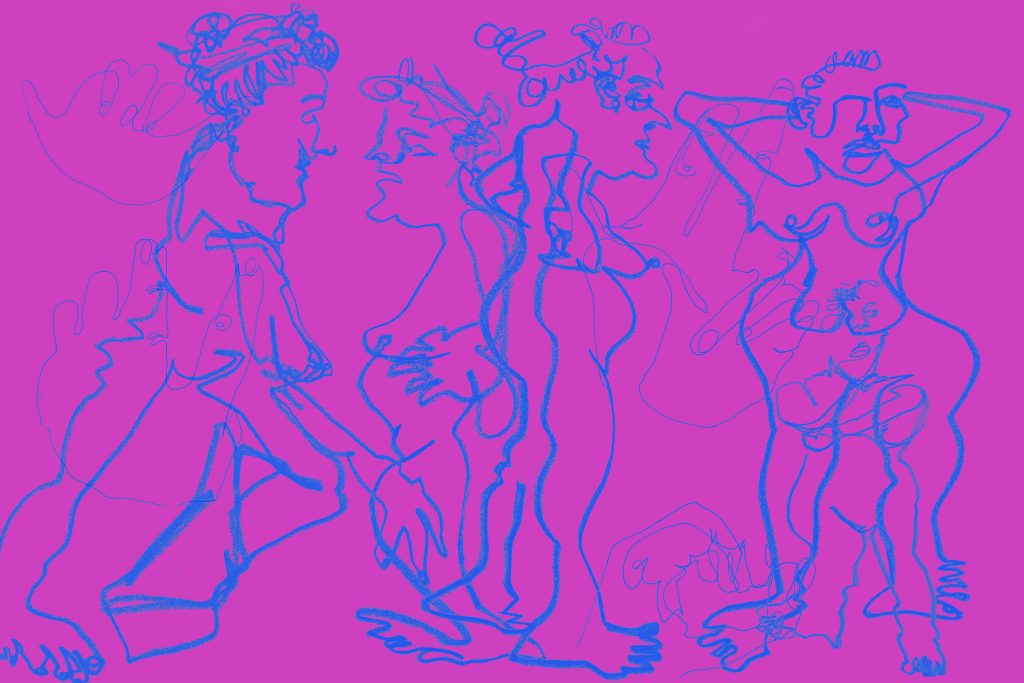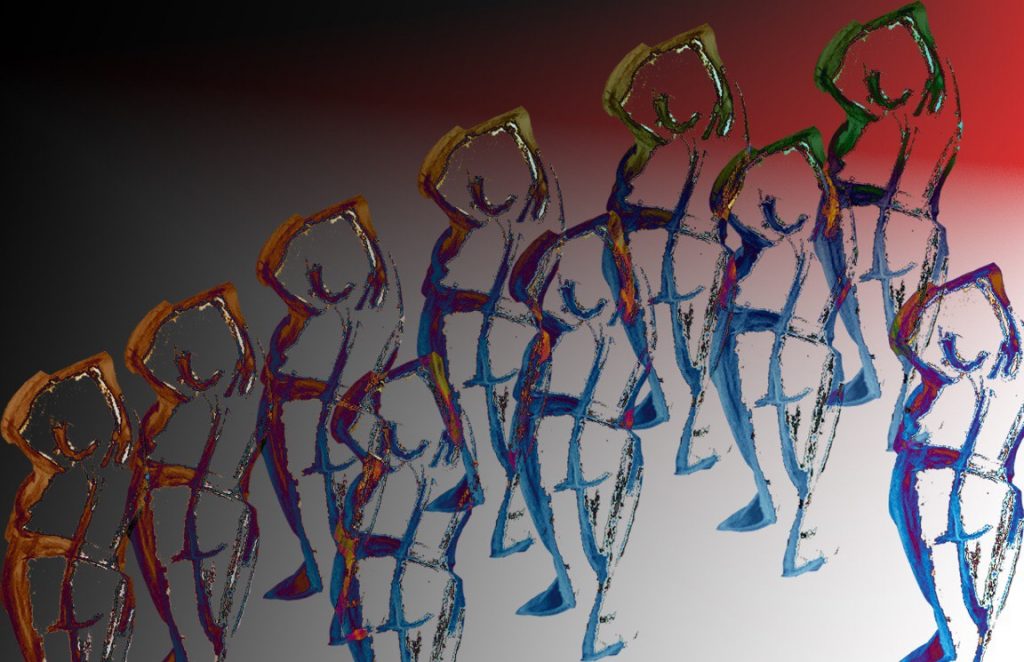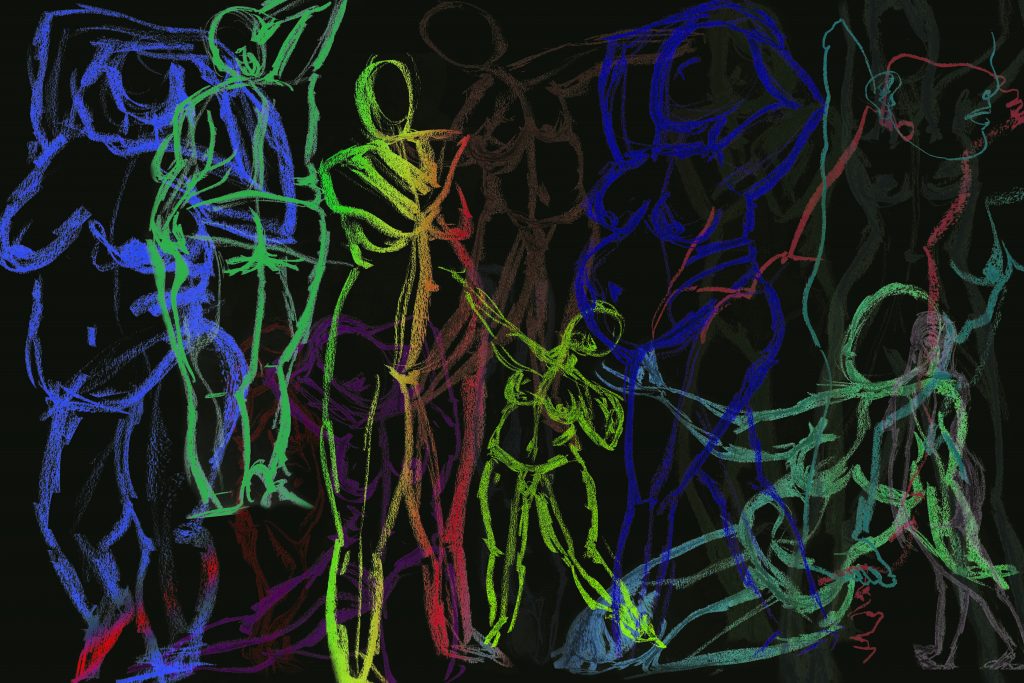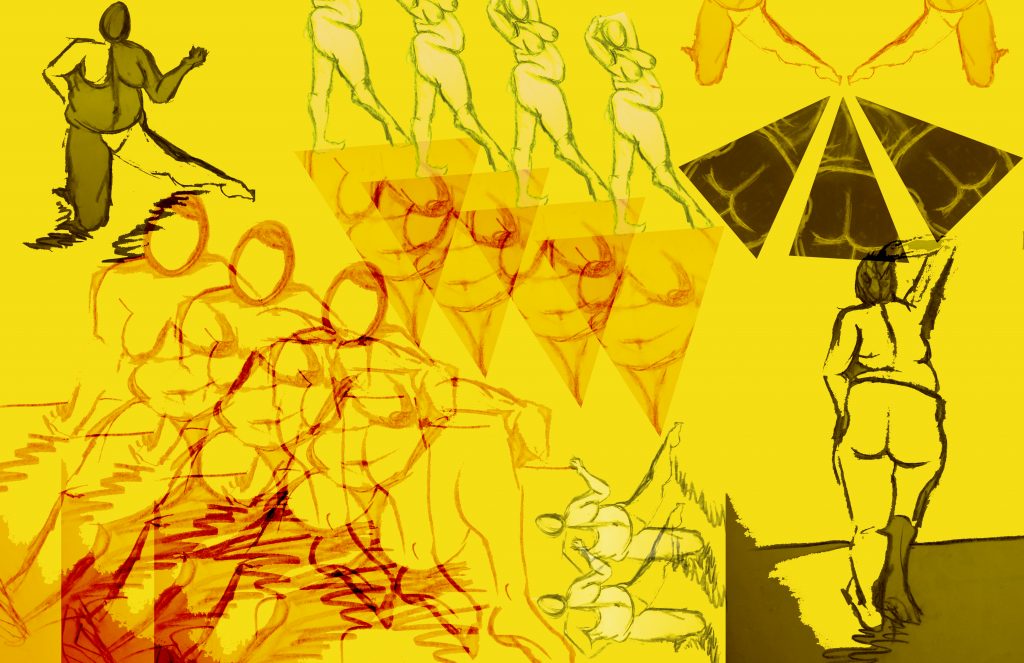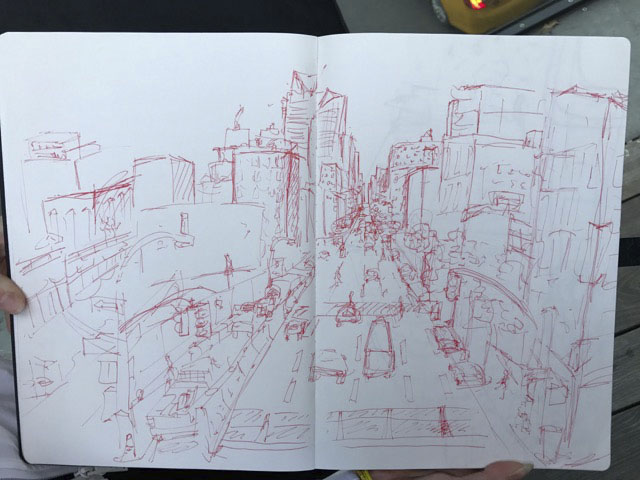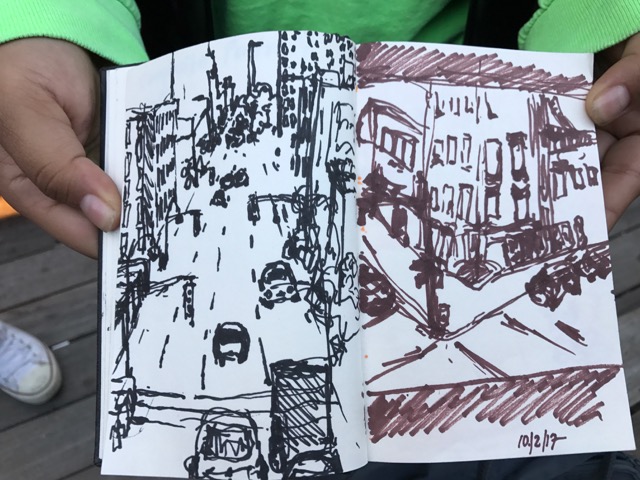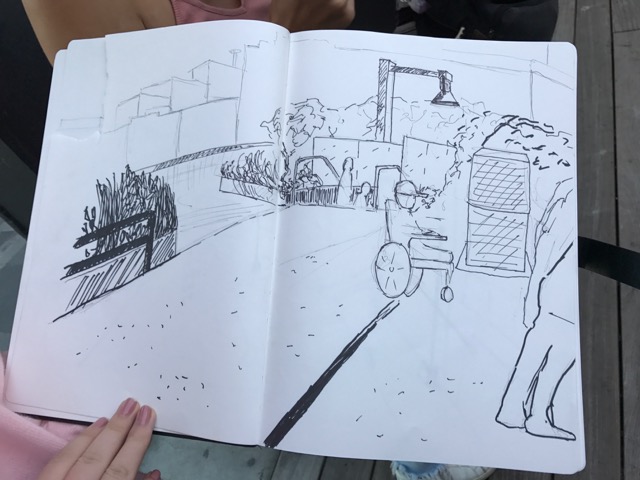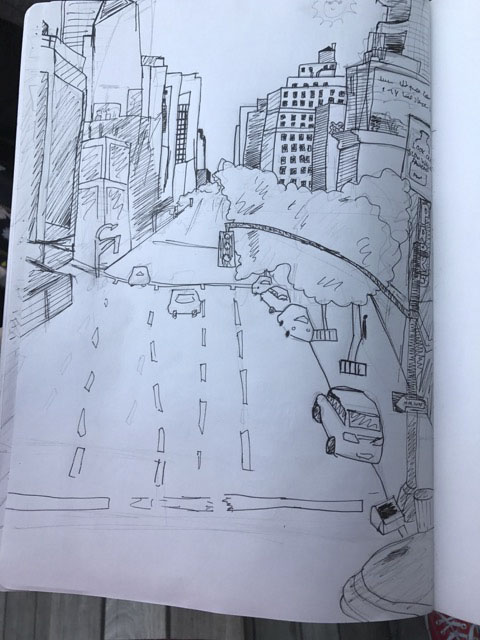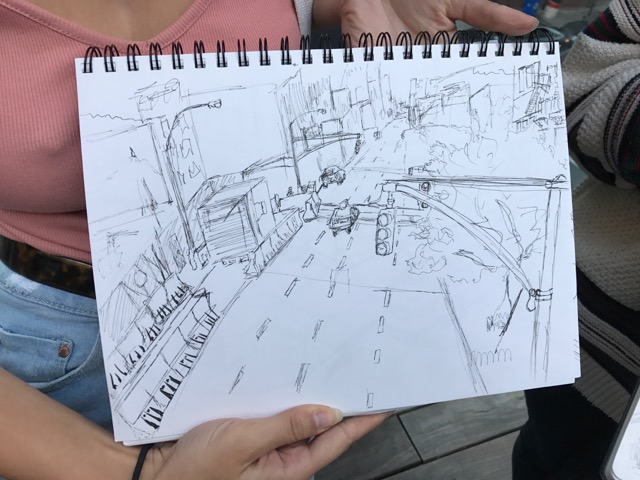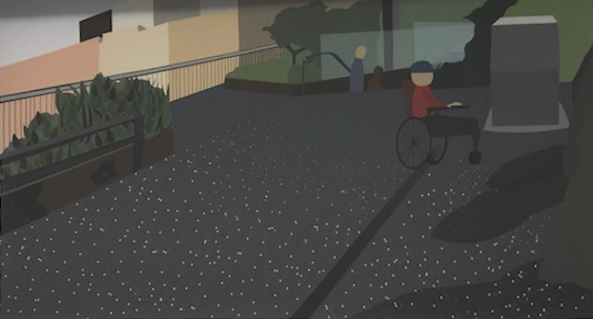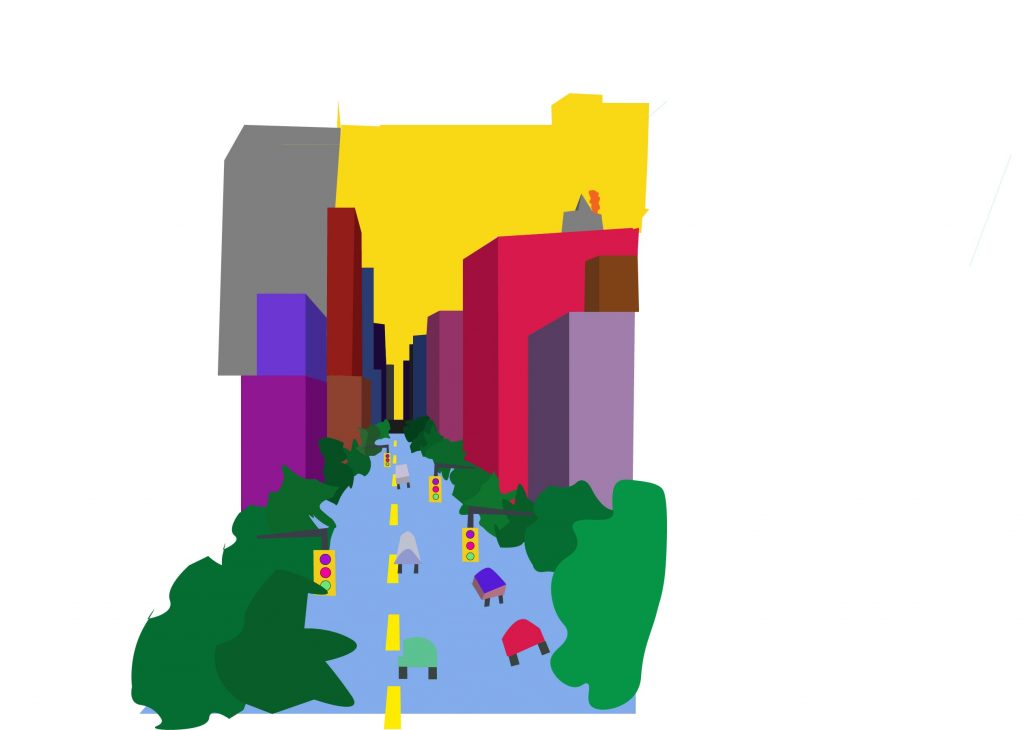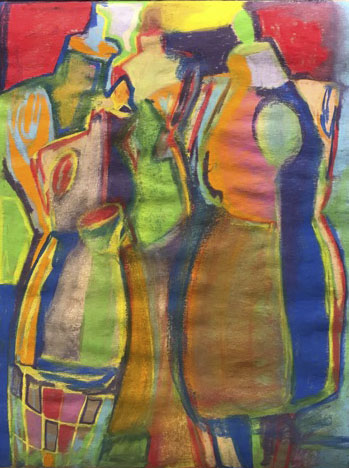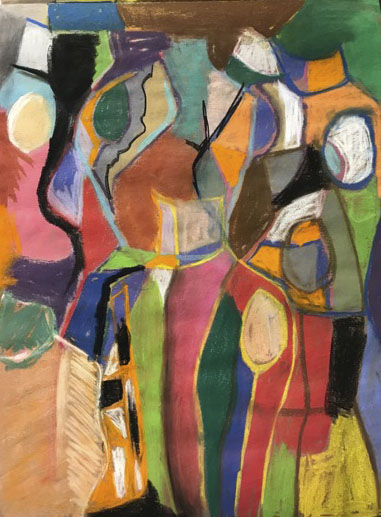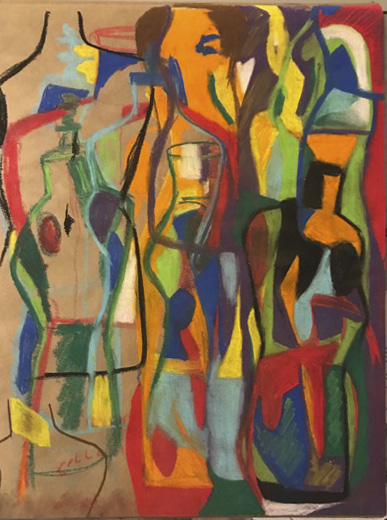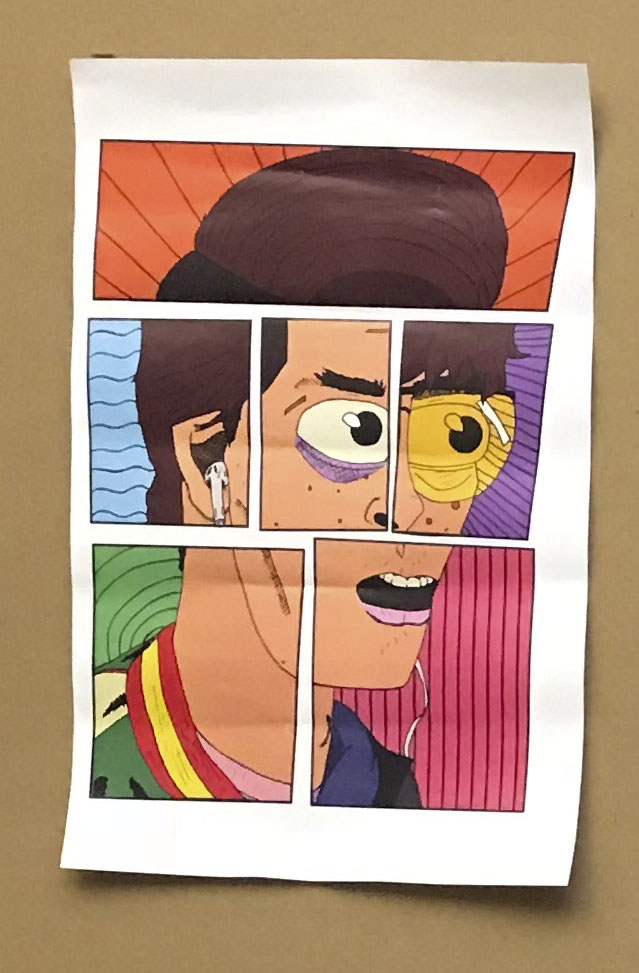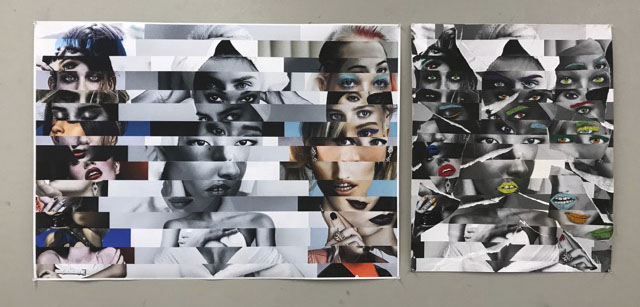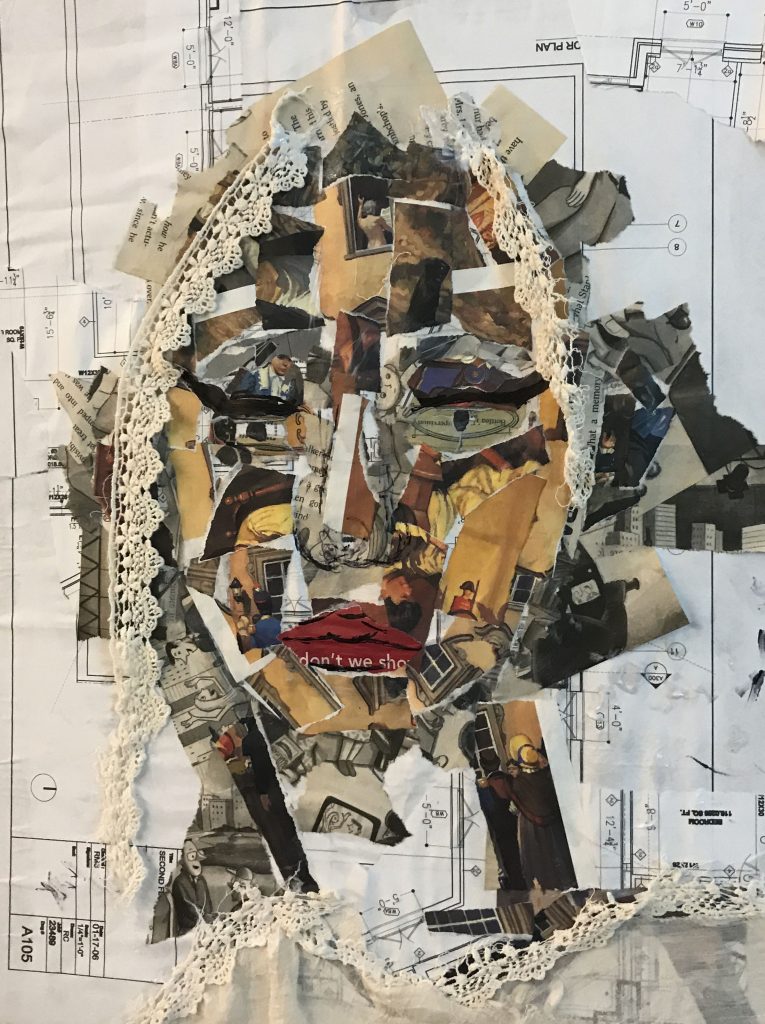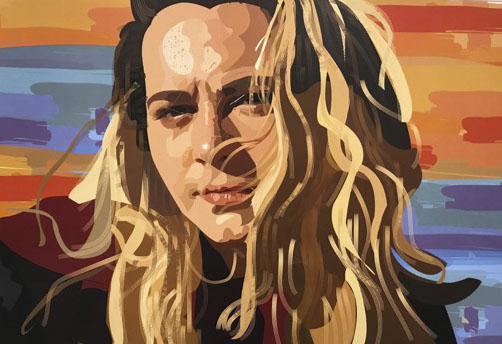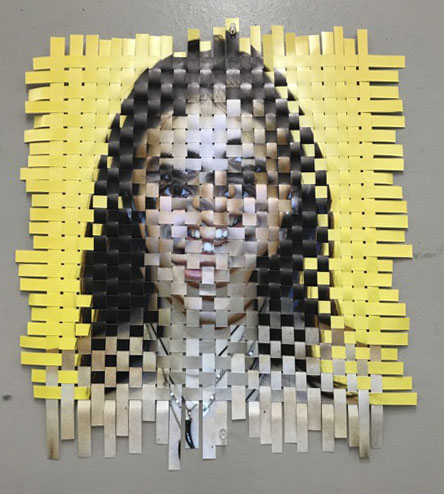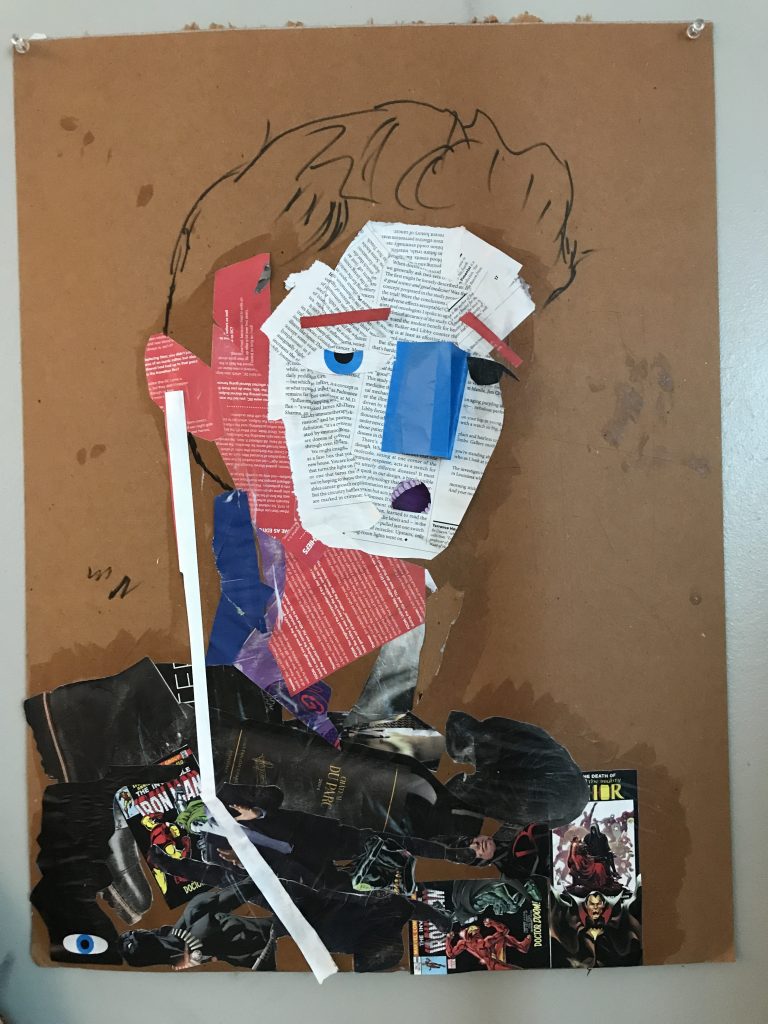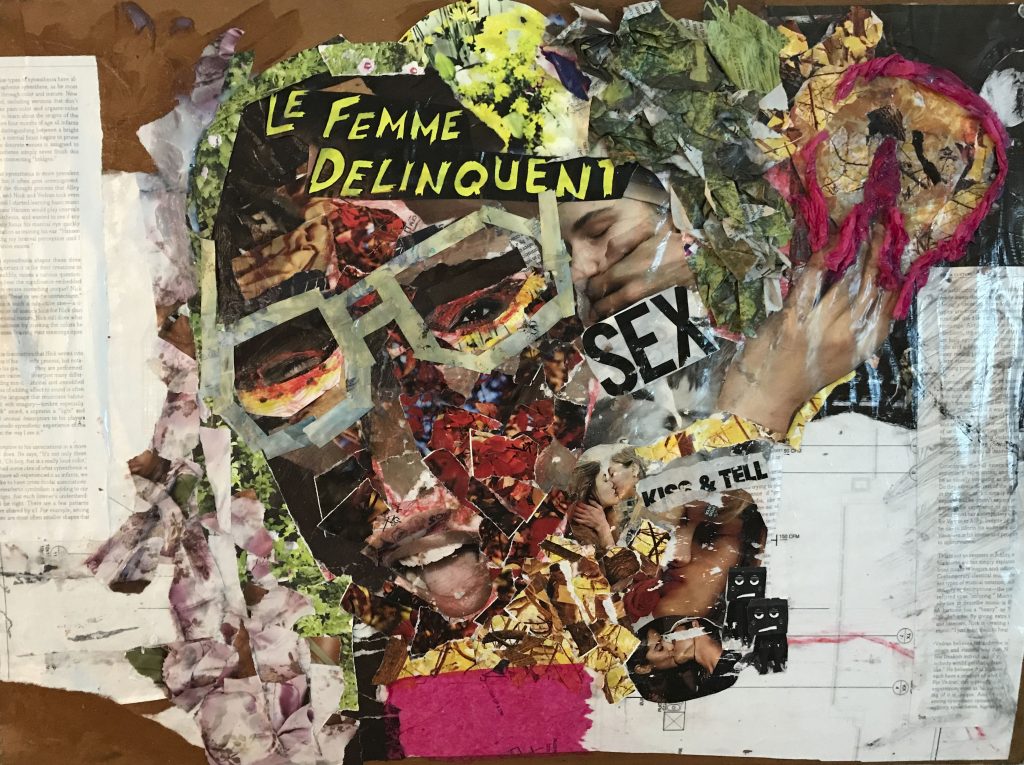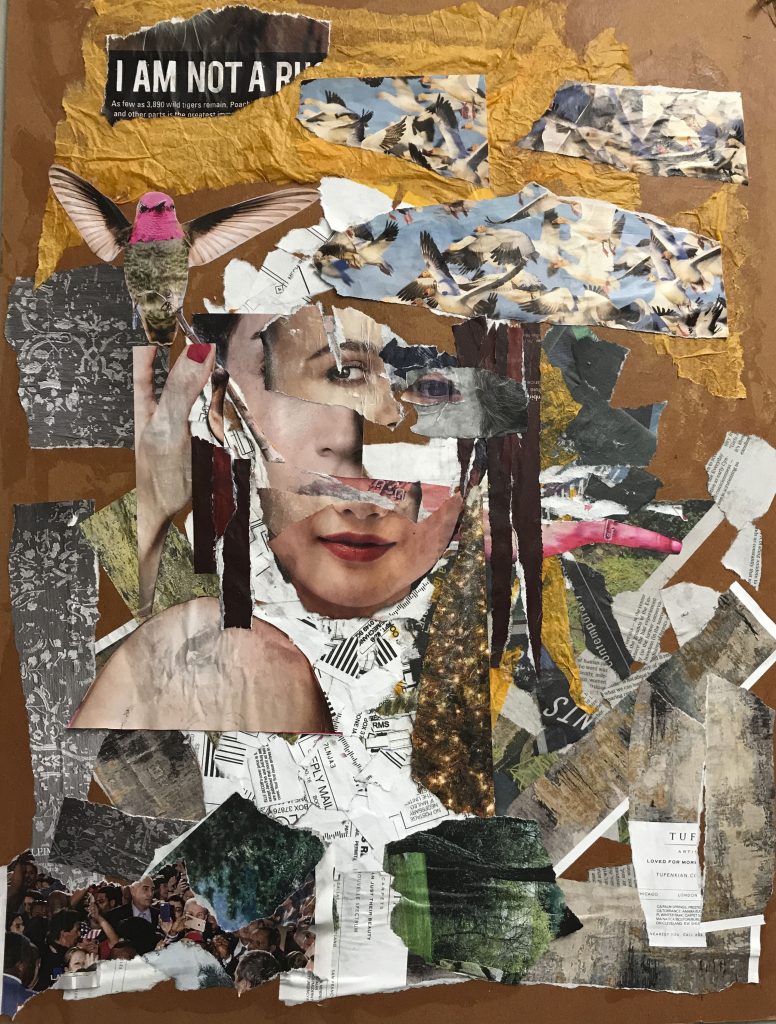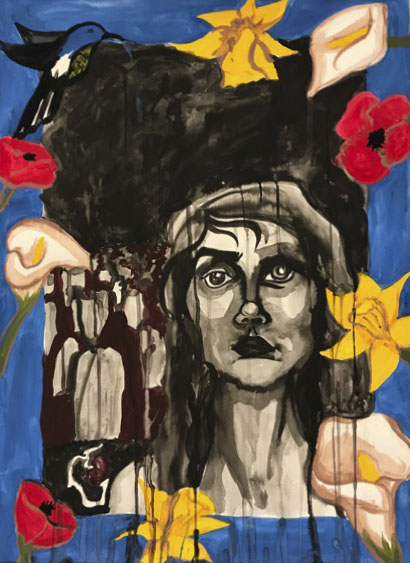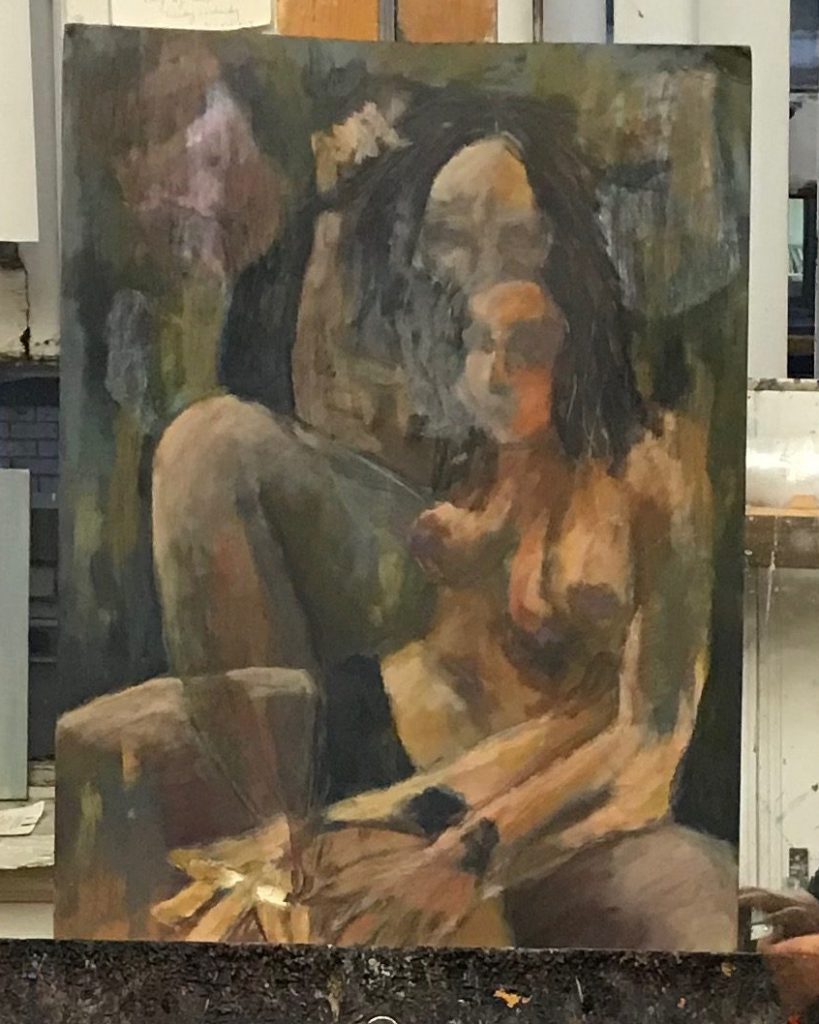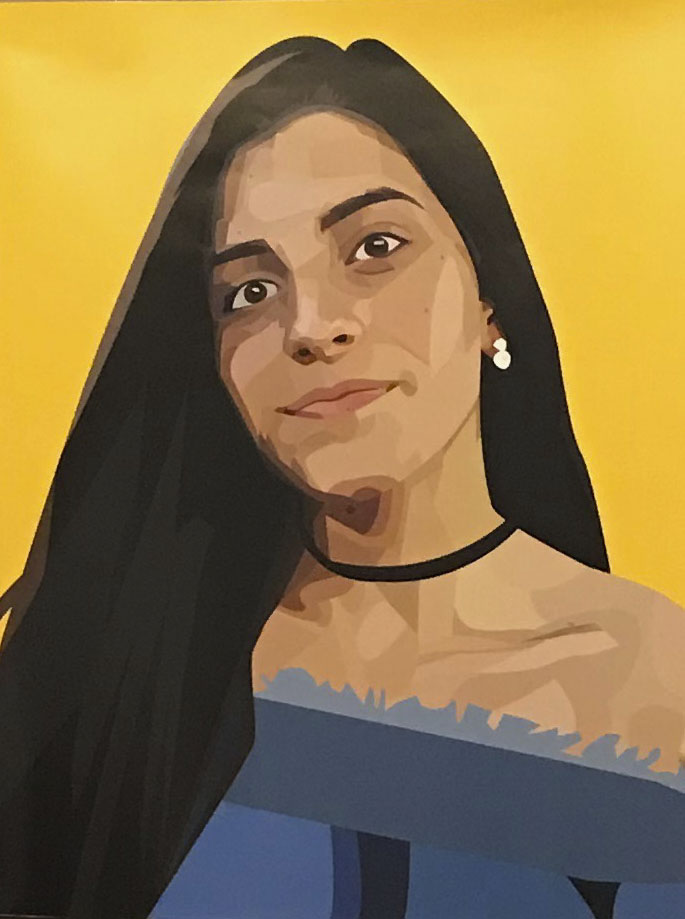Repurposing an Object
Shape and form draw meaning from their context. An artist can reframe the meaning of a form through recontextualizing the viewer’s perspective. By understanding how to set context, an artist is better able to communicate new insights and ideas.
Choose an object that interests you (interesting shape, form, composition, social implication, historical value) and incorporate it into another unexpected and surprising form.
Reference Artists: Rene Magritte, Pablo Picasso, Salvador Dali, Christoph Niemann, Andy Warhol, Marcel Duchamp.
Grid Project
Orientation is as important an aspect of an image as shape or color. The directional focus an artist selects affects the relationship of forms within the image and also informs the viewer’s perspective. Within the image, there is no prescribed choice of “up” as opposed to “down.”
This is a study of abstracting the human figure. Based on your in-class figure drawings, choose one drawing and place it into photoshop. Select one square section of the drawing that you find compositionally intriguing and repeat this image in a grid format, changing the rotation, color, hue, balance, and form in each square section.
Skill Sets: Photoshop– Grids, Guidelines, Snapping to Grids, Duplicating, Fill and Adjustment Layers, Opacity, Manipulations for Photoshop, Blend Modes, Selection Tools
Drawing and Observational Skill Sets: Abstraction vs. Representation, organized chaos, void and mass, visual relationships, the grid, the gesture
Color Theory Concepts: hue, complimentary colors, color in context, saturation, value, temperature (warm and cool colors), intensity
Figure in Motion
The existence of motion is intricately linked to the passing of time. A still image is a frozen moment in time, but if an artist wishes to convey the passage of time, that often means incorporating a sense of motion.
Using the quick studies created in the live ballet class/ in-class gesture drawings and/or blind contour drawings, photograph and import your strongest drawings into Photoshop and use layers to create and manipulate the figure in motion. 15-20 drawings of the figure should be used.
Photoshop Skill Sets: Intro to Photoshop Application, Basic Tools What interface looks like and how to bring in Images, Input/Output, RGB/CMYK, Image Size, how many DPI to print, selection tools (6), Basic Manipulations, scaling/rotating/cut copy paste, Layers: creating duplicating hiding showing. Manipulation of photography, Layer styles, layer masks.
Drawing Skill Sets: Gesture, Blind Contour, Line Quality, Basic structure and anatomy of the figure
References/Artists to consider: Joan Miro, Edgar Degas, stop-motion photography of Eteinne-Jules Marey, Marc Chagall, Chinese Calligraphy, Julie Mehretu, Lascaux cave paintings, Eadweard Muybridge, Duchamp’s “Nude Descending a Staircase, NO.2”, Umberto Boccioni’s “Unique Forms of Continuity in Space”.
Architectural Color Study
The geometry of negative space balances that of positive space. Colors also balance one another, affecting the viewer’s perception of neighboring colors. By linking these two critical aspects of an image, the artist visualizes the intrinsic interconnectedness of shape and color.
Import your favorite sketch done at the Highline concentrating on one and two-point perspective into Illustrator. Represent all aspects of positive and negative spaces in color forms focusing on your study of hue, intensity, temperature, saturation, light and shadow.
Adobe Illustrator is an advanced vector-based software. So, unlike Photoshop’s pixel-based format, it uses math to create vector graphics. In Illustrator, a line is composed of two dots connected by a computer algorithm, instead of just a line of pixels. Because of this, Illustrator is used often to create logos or anything that may need to be printed or displayed at different sizes. A vector graphic will never lose its quality if it’s scaled up or down. Illustrator will also give you a better print output since it’s not resolution dependent. A drawback of Illustrator is that it can’t be used easily to modify images that are already created, since there are limited filters and image editing tools available to you.
Illustrator Skill Sets: Interface, Preferences, Page set up, Art Board, Menus, Grid/Rulers, Navigation, Zoom, Input/Output, Paths – pen tool/Shape tool/pencil tool, Bezier handles, Adding and Deleting anchor points
Drawing and Observational Skill Sets: One-point and two-point perspective, architectural form and space, color theory vocabulary (hue, value, intensity, saturation, light value), simplifying shape, value reduction, positive and negative space, vanishing point, horizon line
References and Artists: Piet Mondrian, Wassily Kandinsky, Richard Diebenkorn, Fairfield Porter, Jacob Lawrence.
Cubisim
Representing the three dimensions of space (and one of time) within a two-dimensional image is challenging. The Renaissance created a standard that most artists shared for hundreds of years, a standard that was viewed as an improvement upon the many representations from the past. At the start of the 20th century, that standard was questioned. Is there a “best” way to represent the 3D world in a 2D image?
Thinking about 3 dimensional space and recording it on a 2 dimensional plane, choose a view of an architectural space and record it in a 360 degree viewpoint simultaneously.
References/Artists to Consider: Georges Braque, Pablo Picasso, Paul Cezanne, Juan Gris, Sonia Delaunay, Olive Ayhens, Alexander Calder
Self Portrait
An artist’s choices in representing the self convey the ideas the artist wishes to communicate. Important figures in the history of art have made different aesthetic decisions in their self-representation. How do these choices arise from, reflect, and influence the meaning of the work? How do the techniques we have studied this semester fit into these decisions? What are the consequences of the artist’s choices?
The Final project will be a culmination of aspects of the topics covered in the semester. The student will choose a figure in art history that he/she feels important in his/her culture and/or background and use this person as a starting point to share. Aspects to think about communicating: self-portrait in historical context, figure and ground, special relationship to culture, identity, the self. Drawing in wet or dry medium and using digital aspects are encouraged, as well as color and black and white materials. Students will have the freedom to express themselves using a variety of materials of their choice, choosing from both digital and analog mediums.
Accompanying the visual portion of the final project will be a one page text about the piece (why the student chose the particular historical artistic figure and what concepts the student chose to cover within the assignment). The text should include a one paragraph biography of the historical artist, one paragraph on the materials and techniques that the student used for the project, and a paragraph about how the student relates to the artist and why this artist holds meaning to the student.
References/Artists to consider: Kara Walker, Louise Bourgeois, Alice Neel, Chuck Connelly, Van Gogh, Kiki Smith, Faith Ringgold, Frida Kahlo, Lucien Freud, Eric Fischl, Marina Abramovic, William Kentridge, Jeff Britton, Lynette Yiadom-Boakye, Nina Chanel Abney, Maya Freelon Asante, Shahzia Sikander, Kehinde Wiley, Islamic miniature painting in illuminated manuscripts.

